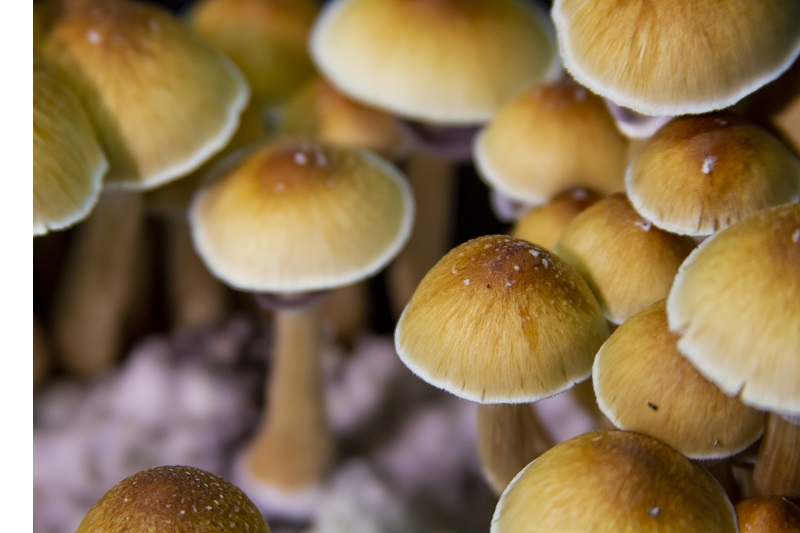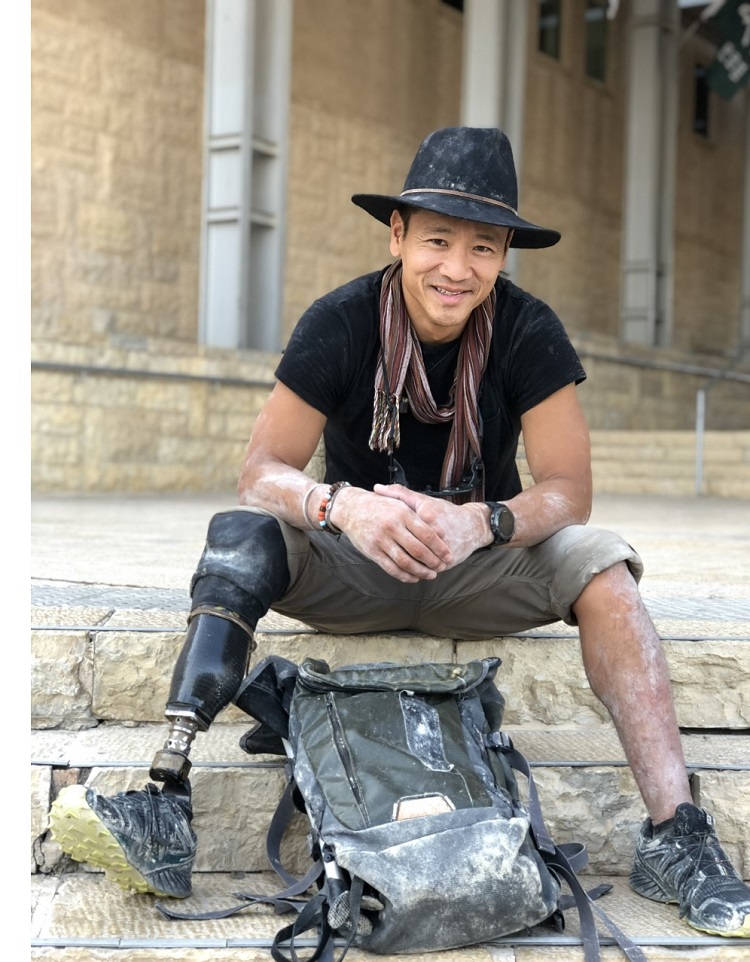
You may have noticed that our May/June cover subject, globe-trotting explorer Albert Lin, was featured in GQ a couple of weeks ago. The article focused on Lin’s novel cure for phantom limb pain via a combination of mirror therapy and psilocybin, the active chemical in hallucinogenic mushrooms. As described in the article (and documented in a 2018 scientific paper), Lin ended months of debilitating PLP—10 on a scale of 10, by his description—in a single session with psilocybin.
His case is one of the first to get mainstream attention, but it almost surely won’t be the last. Psilocybin appears to be on the cusp of a medical-marijuana moment. Last fall Oregon became the first state to legalize the therapeutic use of psilocybin, and a smattering of major cities (including Denver, Oakland, and Washington DC) have decriminalized the drug. Psilocybin startups are beginning to attract venture capital. It’s not very hard to see where this is headed.
But where do things stand right now? Here’s a crash-course on what’s known about psilocybin’s potential as a PLP treatment, what remains to be learned, and how things might unfold over the next five years.
And by the way: If you have first-hand experience with psilocybin as a treatment for phantom pain, we want to hear from you. Write us at editor@livingwithamplitude.com.
Are you saying that if I just eat some magic mushrooms, my PLP will disappear?
No no no no no . . . . let’s quash that idea right off the bat. This is not about self-medicating. As the GQ article describes, Lin went through a guided process with expert supervision. His experience was carefully controlled and documented. This is science, not magic. You can’t go all Ken Kesey and expect to get any meaningful results.
So where’s the scientific proof that psilocybin can curb PLP?
At present, all the evidence is anecdotal and circumstantial. Scientific investigation of psilocybin dates back to the 1930s, but it ceased in 1970, when the US Drug Enforcement Agency deemed it a controlled substance. Research resumed after 2000, but the drug’s potential as a PLP treatment has never been studied systematically. Lin’s institution, the University of California at San Diego, received funding earlier this year for the first-ever randomized clinical trial to test psilocybin’s effectiveness and safety in treating phantom limb pain. Similar studies are in the funding queue and may be launched before the end of the year. We’re probably a couple of years out from having a starter set of data.
However, if we look beyond PLP, there’s considerable scientific evidence that psilocybin can relieve other pain-related and neurological conditions. According to a review paper published last month in the journal Molecules, psilobycin has been documented to alleviate clinical depression, PTSD, anxiety disorder, and other mental health conditions, as well as cluster headaches, cancer-related pain, and other types of chronic pain. In the last five years alone, more than 500 research studies have been funded to research the clinical applications of psilocybin and other psychedelics. “Currently, psilocybin is the most studied psychedelic [drug],” the Molecules paper notes.

How is this supposed to work, anyway? What’s the biological mechanism?
Short answer: Nobody knows. The theory is that psilocybin facilitates the reorganization of neural networks, helping the brain overwrite connections to limbs that are no longer there. In Lin’s case, it seemed to enhance the benefits of mirror therapy, a much-studied form of neurological rehabilitation that has produced limited success in treating PLP. Lin could achieve fleeting pain relief via conventional mirror therapy, but combining it with psilocybin made the effects more powerful and more permanent. In essence, Lin told GQ, the drug enabled his mind to update its map of his body.
“We know it alters cortical connections in ways that might be similar to mirror box therapy,” says Tim Furnish, who will help lead UCSD’s clinical trial. “But is it essentially a supercharging mirror box, or is it doing something completely on its own that’s allowing altered cortical connections to reset themselves?” Researchers are setting out to answer that question (among others) and to see if they can replicate Lin’s results across a larger sample of patients.
Aren’t hallucinogenic drugs dangerous?
Like any drug, psilocybin can have adverse effects if used haphazardly. Lin himself sounded a note of caution in describing his experience to GQ. “You have to facilitate the positive outcome,” he said. “I was in a good, safe setting with a partner who was ready to help me rewrite my story in a way that was focused on positivity. It has so much to do with the setting, the intentions, the community.”
When used with proper care, however, psilocybin has a benign track record by comparison with other hallucinogenic drugs. A 2015 paper in the Journal of Psychopharmacology concludes that “psilocybin may have the most favorable safety profile of all classic psychedelic substances. . . . [B]ased on the highly sensationalized cultural history of classic psychedelics, some in the public may be concerned that controlled clinical prescription application of psilocybin may increase the risk of suicide. The present data do not provide support for this concern.” The Registry of Toxic Effects of Chemical Substances assigns psilocybin a better safety score than both aspirin and nicotine.
How can I volunteer to participate in a clinical trial?
UCSD’s study is being run by the Psychedelics and Health Research Initiative (PHRI). They are still recruiting research subjects. If you’d like to be considered for participation, sign up for the PHRI newsletter.
Additional research may be rolled out before the end of the year. One pharmaceutical startup is completing preliminary studies and hopes to launch a full-fledged clinical trial this fall in conjunction with an unnamed university. The details are vague; once those come into better focus, we’ll pass that information along. In addition, both Harvard and Johns Hopkins have recently launched new research centers devoted to psychedelics and neuroscience. Neither has any phantom pain research currently listed at its website, but we’ll share the news if and when that changes.